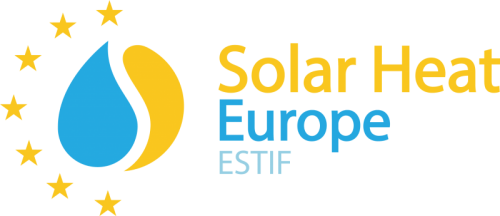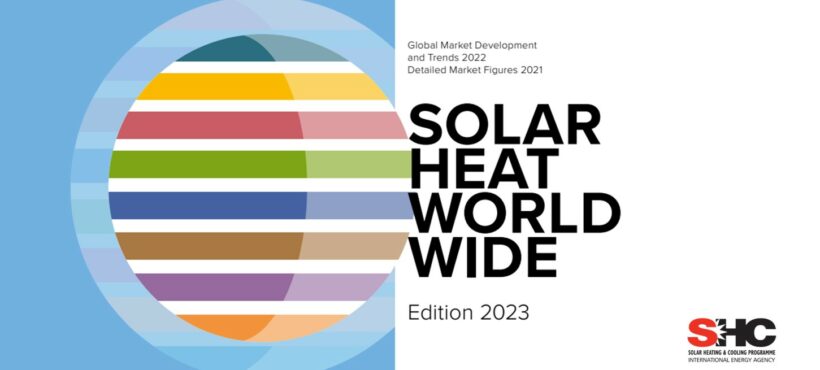The Solar Heat Worldwide Report 2023 confirms a positive trend in solar thermal deployment across Europe. While the global market experienced a 9.3% contraction, largely due to declines in major markets like China and India, Europe is experiencing significant worth in the adoption of solar thermal technologies for the decarbonisation of heating and cooling. Several European countries, including Italy, France, and Greece, have witnessed remarkable double-digit growth ranging from 10% to 40%.
Global market
From 2000 to 2022, global solar thermal capacity increased from 62 GWth to 542 GWth, with 19 GWth installed just last year. Despite an overall growth trend in most regions since 2021, the downturn in 2022 was influenced by significant setbacks in China and India, due to harsh lockdown measures or changes in subsidies.
The collective solar thermal systems deployed globally in 2022 contributed to savings equivalent to 47.48 million tons of oil and 153.3 million tons of CO2. This shows the technology’s key role in reducing greenhouse gas emissions worldwide. To give more context to these figures, in terms of energy generation in comparison with other renewable technologies, solar thermal systems provided 440 TWh of heat globally, while wind turbines generated 2,215 TWh and photovoltaic systems produced 1,312 TWh of electricity.
Deep dive into Europe’s solar thermal market evolution in 2022
According to Solar Heat Europe’s preliminary data and the EurObservER Solar Thermal Barometer, the European solar thermal market has experienced a growth of over 10% in annual installed capacity in 2022 compared to the previous year, reaching a total installed capacity of approximately 40 GWth.
The global report highlights markets like Italy, Greece, and Poland, which have sustained positive trends for two consecutive years. Italy, after an 83% surge in 2021, continued its robust performance with a 43% growth in 2022. Greece experienced a similar growth path, with 18% growth in 2021 and 17% in 2022. Poland also maintained its momentum, with growth rates of 17% in 2021 and 11% in 2022. France (29%) and Cyprus (5%) also showed positive developments in 2022.
Most European countries experiencing growth are benefiting from national subsidies and support frameworks, underscoring the significant impact of policies and financial instruments on renewable solutions deployment. While small-scale residential systems remains the main segment, there has been exponential growth in large-scale applications for solar district heating (SDH) and solar heat for industrial processes (SHIP) in recent years.
In 2022, Germany marked a record year for solar heating networks, installing eight new large-scale solar thermal systems, primarily for SDH in smaller towns and municipalities, totalling a collector area of 44,923 m². Denmark leads the SDH market with over 120 operational plants, followed by Germany (51), Sweden (23), Austria (20), and Poland and France (8 each).
The industrial sector also presents significant potential for growth, with an increasing number of Solar Heat For Industrial Processes (SHIP) plants in Europe. In 2022, 39 new systems were installed, representing a 25% increase, with a thermal capacity of 8.57 MWth (+11%).
Another important segment is large systems for the residential, commercial, and public sectors, with European countries such as Greece, France, Switzerland, Austria, Poland, and Spain ranking among the top ten globally for such systems. These installations are often found in hotels, leisure centers, hospitals, or elderly care facilities.
The global report also tackles the PVT (Photovoltaic-Thermal) market, highlighting Europe’s leading position with a 62% global market share, led by France, and followed by Germany, the Netherlands, and Spain. Despite a decline in the PVT market in 2022, primarily due to subsidy changes in France, the technology showed an increased demand between 2017 and 2021. However, the PVT market continued to grow in 2022 in countries like Italy (+414%), Germany (+126%), and Spain (+52%).
Europe and large scale solar thermal applications in the Global Outlook for 2023
As concerns over global warming and energy security grow, the heating sector has started to receive increased political attention. Recent policy developments include the US Inflation Reduction Act (August 2022), the European REPowerEU plan (May 2022), and China’s 14th five-year energy plan (March 2022).
With the building and industrial sectors consuming about 97% of the final energy consumed for heat, there is enormous potential for solar thermal to not only provide hot water and space heating in residential and commercial sectors, but also to be used for district heating in urban areas and industrial process heat.
The available data shows a substantial increase in demand for large-scale solar thermal systems in 2023. Considering that the development of such systems for solar district heating and industrial process heat requires a long lead time, and most policies related to renewable heat were only initiated in 2022, it is assumed that there will be a high increase in the number of solar thermal installations in the near future.
An increased demand is particularly expected in the district heating sector. Germany had a 30% increase in total collector area for district heating in 2022, a trend expected to continue in 2023 and beyond. Numerous projects are under construction or in advanced planning stages, including a major solar district heating plant in Leipzig, Germany, which will be commissioned in 2025. In the Netherlands, a large-scale solar district heating system in Groningen will be soon commissioned. Additionally, solar district heating projects are emerging in Serbia and Kosovo, which will provide renewable heat to cities like Pristina, Pancevo, and Novi Sad.
Solar heat for industrial processes (SHIP) is another sector that will grow in 2023. Multiple multi-MW plants using solar process heat above 100°C are in construction, bringing a sevenfold increase in this market segment. These include projects in Belgium, Spain, and Croatia, demonstrating the increased adoption of solar thermal in industrial applications.
In conclusion, solar thermal, in synergy with other renewables, plays a pivotal role in meeting the global and European demand for heating. As the world looks for sustainable solutions to cover heating needs, solar thermal represents a proven and cost-effective solution that can contribute significantly to reducing GHG emissions, and as such ensure a more sustainable energy future.


Leave a Reply